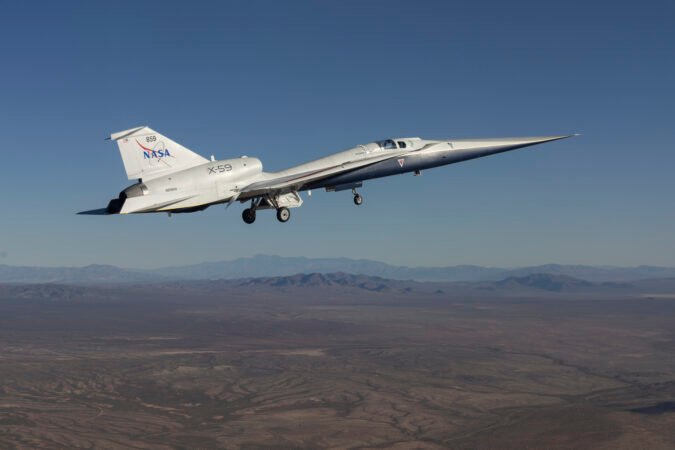Summary Points
-
Historic First Flight: NASA’s X-59 quiet supersonic research aircraft successfully completed its inaugural flight on October 28, 2023, flying for 67 minutes from Palmdale, California.
-
Targeted Performance: Piloted by NASA test pilot Nils Larson, the aircraft reached an altitude of 12,000 feet and a speed of 230 mph, adhering to initial flight plans.
-
Next Steps: Following this milestone, the focus shifts to a series of test flights aimed at higher altitudes and supersonic speeds to validate performance and safety.
-
Innovative Goals: Through the Quesst mission, NASA seeks to revolutionize quiet supersonic flight technology to enable future supersonic transport aircraft.
NASA’s X-59 quiet supersonic research aircraft completed its historic first flight on Oct. 28 at 11:14 a.m. EDT. The aircraft took off from Lockheed Martin Skunk Works in Palmdale, California. It flew for 67 minutes before landing at NASA’s Armstrong Flight Research Center in Edwards, California.
During the flight, the test pilot reached an altitude of about 12,000 feet and a speed of 230 mph. The aircraft’s landing gear remained down throughout the flight, a standard procedure for first-time experimental flights. This careful approach ensured safety while gathering crucial data.
Now that this milestone is achieved, the team plans a series of test flights. These future flights will operate at higher altitudes and supersonic speeds. The focus remains on performance and safety, which are vital for further developments.
NASA’s Quesst mission aims to pave the way for quiet supersonic travel. The unique design and technology of the X-59 could revolutionize future supersonic transport. This advancement may dramatically reduce noise pollution, allowing planes to break the sound barrier over land without disturbing communities.
As this project evolves, the potential benefits stretch far beyond aviation. Quieter supersonic flights could improve travel times and enhance global connectivity. Ultimately, the X-59 represents a leap toward a more efficient and neighbor-friendly future in air travel.
Expand Your Tech Knowledge
Explore the future of technology with our detailed insights on Artificial Intelligence.
Stay inspired by the vast knowledge available on Wikipedia.
SciV1

